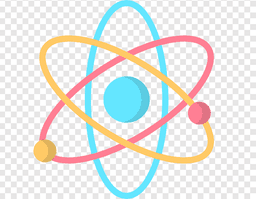There are two distinguishing characteristics of quantum outcomes. They're infused with a sense of unpredictability. Electrons, for example, disperse into a hazy cloud. In addition, the equations that describe them, such as Schrödinger's equation, include Planck's constant, a natural constant.
Classical systems, like a gravitational wave vibrating over the Earth, are absolutely sharp and can be described without using Planck's constant. These features provided O'Connell's group with a litmus test for establishing which sections of which amplitudes were classical: there must be no uncertainty in the final description, and Planck's constant must be absent. The researchers discovered that the simplest five-point amplitude included two "fragments," one with and one without Planck's constant. The first portion was a quantum fragment that could be safely disregarded. The second was classical radiation, which was particularly valuable in gravitational wave astronomy.
They then focused on the no-loop six-point amplitude, which involves the emission of two radiation particles. Because having two radiation particles is like measuring the field twice, this amplitude indicates the wave's uncertainty. The amplitude appeared to be difficult to grasp at first look, with Planck's constants strewn around.
However, when they calculated the conclusion in more detail, they discovered that many of the components containing Planck's constant cancelled each other out. In the end, O'Connell and his colleagues discovered that the six-point uncertainty could be divided into two types: classical and quantum. The classical uncertainty was zero, as it had to be. The quantum component, on the other hand, did not. In other words, there was no classical information in the six-point amplitude. In retrospect, the outcome looked inescapable. However, the researchers had erroneously assumed that the six-point amplitude would still have some minor classical meaning before thoroughly studying the pieces.
"This is quantum in its purest form." "At least for me, that was a bit of a shock," O'Connell remarked.
O'Connell had researched an electromagnetism-related force. To see if the conclusion remained true for gravity, Ruth Britto of Trinity College Dublin and colleagues calculated the no-loop six-point amplitude for two heavy particles using various technological shortcuts. They discovered that it, too, is devoid of classical substance.
"It's hard to believe unless you perform the numbers," said Riccardo Gonzo, who worked on both discoveries at Trinity College Dublin.
According to the researchers, any amplitudes with more than five points will either be all quantum, and hence ignorable, or expressible as a simpler function of known amplitudes at higher loops. It's all but guaranteed by an endless procession of shaky partnerships.
"Quantum field theory is expected to describe traditional physics," Roiban explained. "It turns out that having zero uncertainty in some states is how it does this."
As a result, classical waves are easier to express in quantum physics than experts had anticipated. "A gravitational wave, or any wave for that matter, is a large, floppy thing. "It should be based on a lot of small things," Roiban explained. "You know everything once you know the collision plus one photon or one graviton in the final state," says the author.
Spiraling in the Direction of Mergers
When LIGO/Virgo detects gravitational waves, the signal can be as low as 10% noise. Future detectors, such as the space-based LISA, may be able to record space-time ripples with 99 percent or greater fidelity. Researchers expect gravitational waves to disclose a lot of information at such resolution, such as the rigidity of merging neutron stars. Researchers are hopeful that they will be able to access such information thanks to recent breakthroughs in forecasting the shape of waves using quantum amplitudes.
"It would be amazing if this turns out to be the case," Buonanno stated. I believe it will simplify the math in the long run, but we'll have to wait and see."
However, calculating genuine, astrophysical waveforms from amplitudes remains an ambitious goal for the time being. Four- and five-point amplitudes capture what happens when black holes "scatter," or slingshot off one other, and the concept can now be generalized to comprehend simple mergers without black holes spinning. However, these amplitudes are yet unable to completely represent the more complex mergers detected by gravitational wave detectors. Researchers at Amplitude think that by tweaking their methodology, they can generate realistic waveforms for a wide range of mergers, although they haven't done so yet.
The broad character of the discovery implies that the way the uncertainty principle organizes the quantum haystack might be valuable in other areas of quantum theory, in addition to gravitational waves. Independent cross-checks, for example, might be enabled by the endless variety of connections between amplitudes, offering useful direction for calculations that can take months. It might also be used to discriminate between quantum theories that can describe our macro world and those that can't.
"It used to be intuition," Roiban explained. "Now it's a hard and fast rule. It's a math, and calculations are difficult to dispute with."



